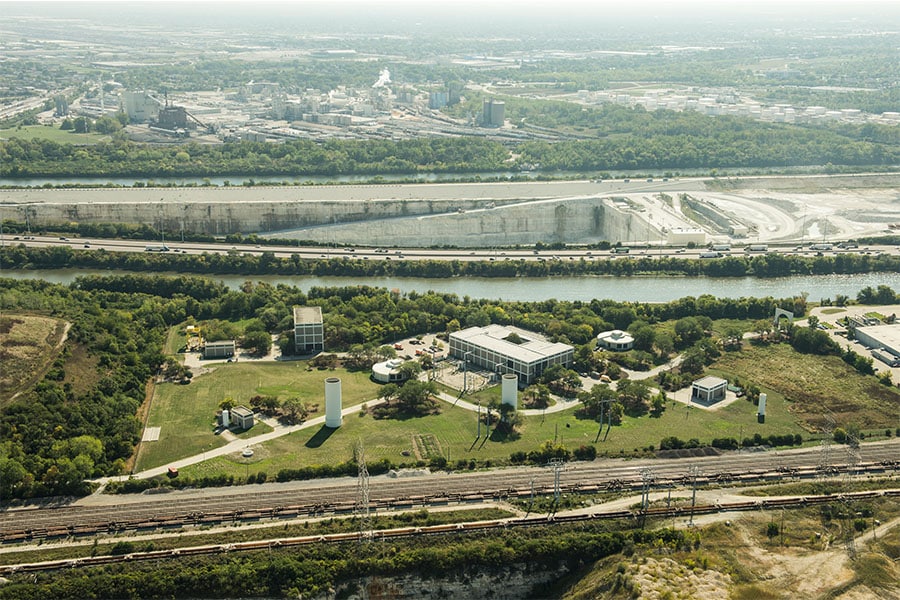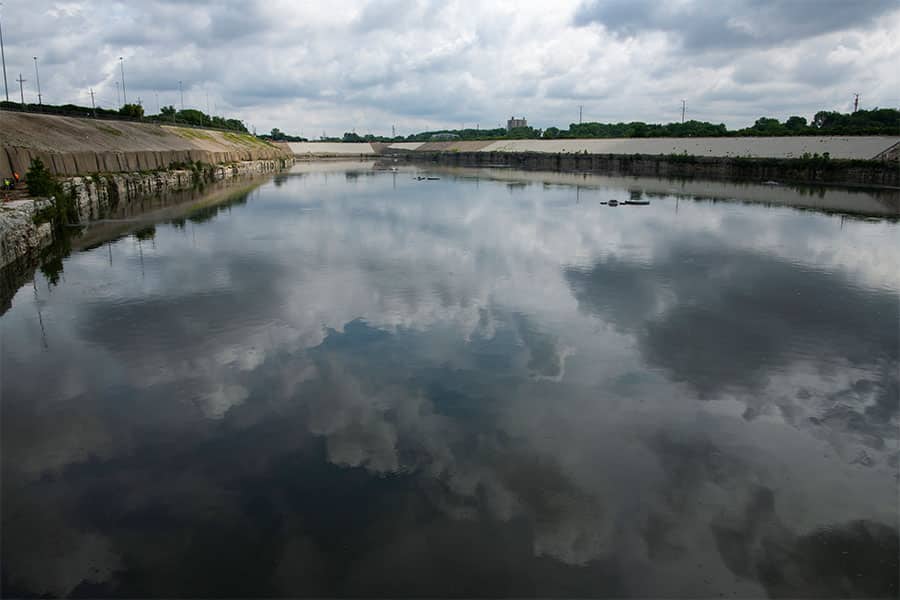Many experts believe that Chicago’s Tunnel and Reservoir Plan (TARP)—initially designed to reduce flooding, improve the Illinois city’s water quality and protect adjacent Lake Michigan from pollution—is one of the most ambitious civil engineering projects in history. Under construction since the 1970s, the massive project is slated to be completed by 2029.
But as the years have passed, the challenges confronting TARP’s engineers have grown even more considerable than originally anticipated—challenges that, if not managed properly, could eventually become grim for the 9.5 million people who live in Chicago and its surrounding area.
Facing a new landscape of extreme weather events brought on by climate change has forced the project’s engineers to be creative in their approach to this megaproject, continuing Chicago’s role as a pioneer in aquatic engineering.
Civil engineers in major cities across the globe are taking note, as Chicago’s TARP project may serve as a model for addressing similar water management challenges.
A visionary history
TARP’s roots stretch back to the early days of Chicago’s long history—and necessity—of aquatic engineering. Chicago is built upon a swamp, and for decades engineering projects like TARP have worked to maintain balance in how the city’s water fluctuates and flows.
The city sits at the nexus of two major waterways: the Chicago River, which flows through Chicago’s downtown and surrounding area, all the way into the Mississippi River, and Lake Michigan, the Great Lake that nestles the city’s 22-mile eastern coastline north into Wisconsin and south into Indiana.

The core of the engineering demand is based on the flow of the Chicago River. Naturally, the river flows into Lake Michigan. But as the city grew at the turn of the Industrial Revolution that flow became problematic, as sewage and other pollutants dumped into the river would ultimately flow into the lake, which also served as the city’s prime source of drinking water.
Officials at the time decided to do something remarkable: reverse the flow of the river entirely, so that the sewage and pollution wouldn’t flow into the lake but the other way around.
“The MWRD’s reversal of the Chicago River in 1900 is considered one of the greatest engineering feats in history,” said Allison Fore, public and intergovernmental affairs officer of the Metropolitan Water Reclamation District (MWRD) of Greater Chicago. “It made our region a healthier and safer place to live and established Chicago as a thriving metropolis.”
SEE DETAILED MAP OF TARP HERE
One of TARP’s key goals is to address the strain a century of development has placed on a system designed when Chicago was just beginning to grow. “In the early 20th century, the Metropolitan Water Reclamation District of Greater Chicago built large intercepting sewers to redirect sewers to newly built waste reclamation plants,” Fore said. “This system works well in dry weather, but in heavy rains the intercepting sewers and water reclamation plants can reach capacity and result in combined sewer overflows. By the 1960s, Chicago-area sewers were overflowing to the Chicago River more than 100 days a year.”
The solution was to launch the TARP project, which gained official approval in 1972.
Groundbreaking technology
The foundations of TARP are a system of large tunnels and vast reservoirs designed to capture overflow in rainy weather, which is then pumped into one of the system’s seven water reclamation plants to be cleaned. And when they say big, they mean it.
“You could stack 12 Soldier Field stadiums inside Thornton Composite Reservoir and more than 11 inside McCook Reservoir,” Fore said, referencing the Chicago Bears’ football stadium. “When complete, McCook Reservoir will be the largest combined sewage reservoir of this type in the world.”

The TARP system consists of four large tunnels and three reservoirs designed to hold water until it’s treated at the reclamation plants. When complete, the system will create about 20 billion gallons of water storage capacity.
How does the TARP team go about building such a vast water treatment system?
According to Fore, it all starts with limestone. She described how the construction process was managed at the recently completed McCook Reservoir:
“The reservoirs were constructed out of 400-million-year-old rock,” she said. “To seal the ground around the entire reservoir perimeter, we install double row grout curtains. A total of 373 miles of holes were drilled into the rock over 300 feet deep at a 15-degree angle at McCook, and then filled in stages from the bottom up with grout under pressure. The grout migrates into all the cracks and fissures in the rock mass to reduce the permeability. The grout curtain ties into a nearly impermeable natural layer of shale, preventing water from leaving through the bottom of the reservoir.”
Creating reservoirs this vast generates an unbelievable amount of excess limestone, which the TARP team used for all types of construction throughout the greater Chicago area, as well as two man-made hills in a local forest preserve.
Because of its unparalleled scope, TARP has become a model for cities throughout the U.S. and around the world, including new projects in London, Singapore and Vienna. However, as Fore pointed out, “being the first and largest comes with its drawbacks, as there are no blueprints to follow. We are challenged to take on unprecedented rainfall in intense and frequent outbursts.”
Extreme weather challenges
As extreme weather events become more common, TARP engineers have grappled with the challenge of designing a system to support more dramatic cycles of flooding.
“Climate change alters the hydrological cycle, leading to changes to the amount, timing, form and intensity of precipitation,” Fore said. “As the agency responsible for managing both regional stormwater and wastewater, and protecting our drinking water supply and our waterways, it is certainly a daunting challenge, but TARP has proven to be a critical tool in the fight against climate change, making a huge impact on our quality of life with each passing storm.”
TARP facilities have already reduced flooding rates throughout the city, capturing the overflow caused by a series of recent historic storms.
“The McCook Reservoir and two adjoining tunnel systems have already prevented more than 120 billion gallons of combined stormwater and sewage from overflowing to waterways in its first three years,” Fore said. “The other two systems, located in the Calumet and Kirie WRP basins, have virtually eliminated combined sewer overflows in their service areas since being completed in 2015 and 1998, respectively. Without this elaborate system in place, billions of gallons of water contained in these tunnels and reservoirs would have flooded basements and streets or polluted our waterways.”
Fore said that the TARP team has developed a number of strategies to help prepare the city to reduce instances of overflow, investing in more than 200 projects aimed at flood reduction.
“We anticipate future storms by increasing our stormwater management resources; developing master planning studies to prepare us for the future; expanding partnerships and programs; updating and implementing policy; and investing in hundreds of new projects to manage an influx of stormwater,” she said. “Although the full impact of climate change has not yet been felt, the MWRD decided to plan for climate change to ensure that it can continue to provide reliable, high-quality wastewater treatment and stormwater management services, while reducing our carbon footprint. We cannot project the size and intensity of future storms, but we can plan for them.”












